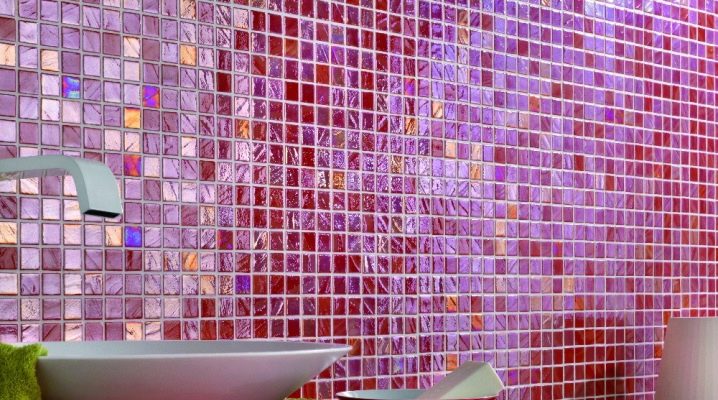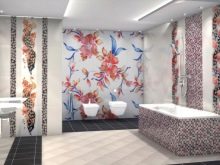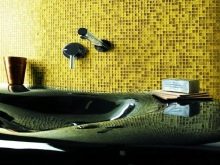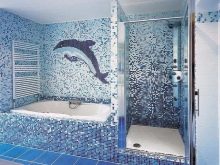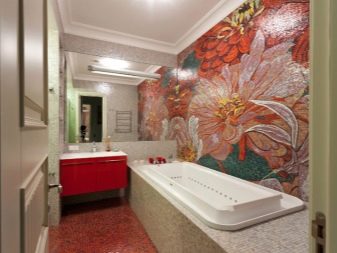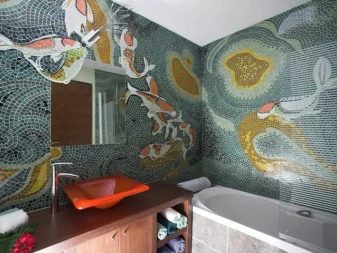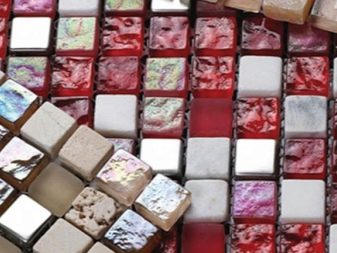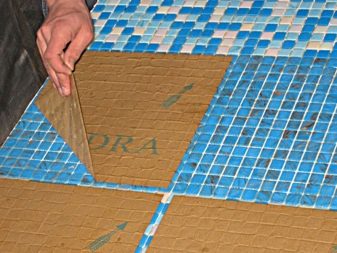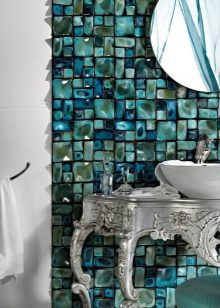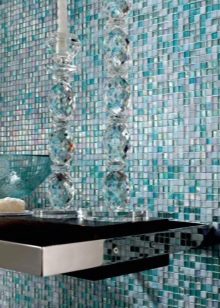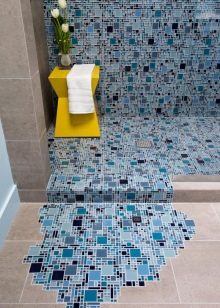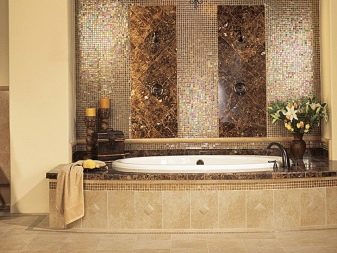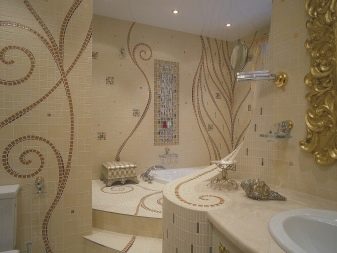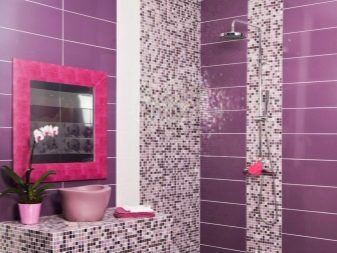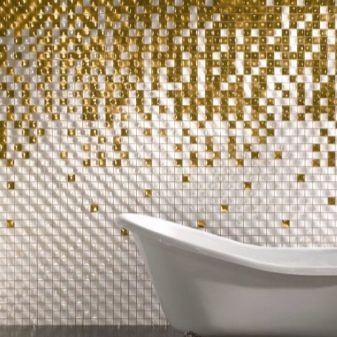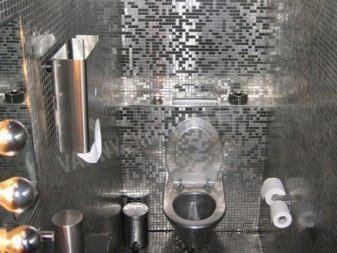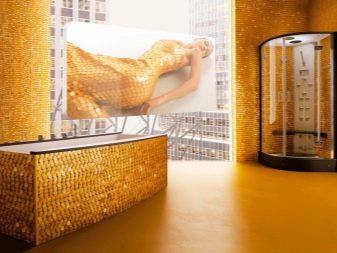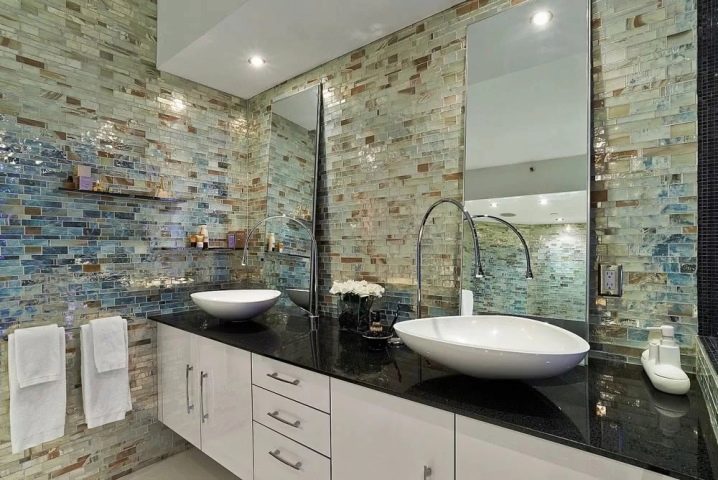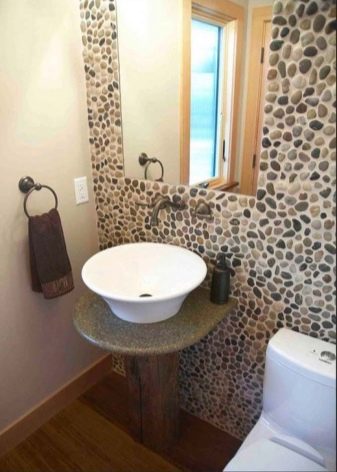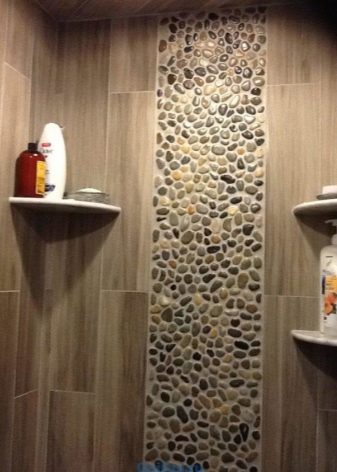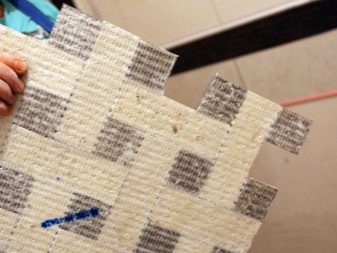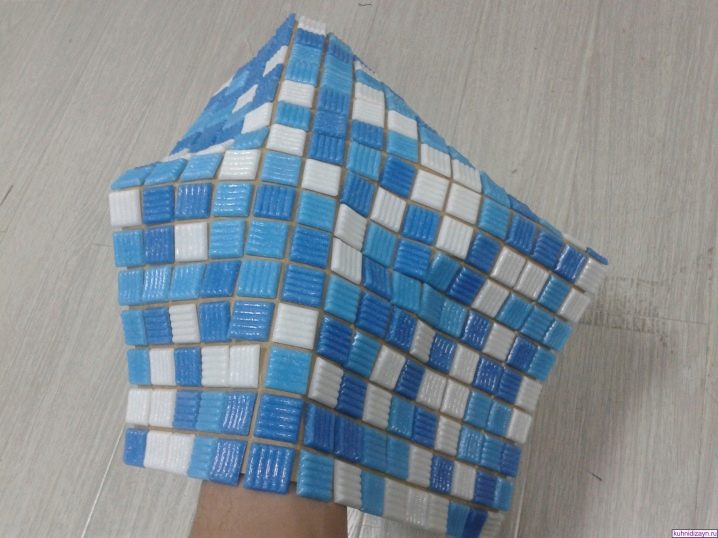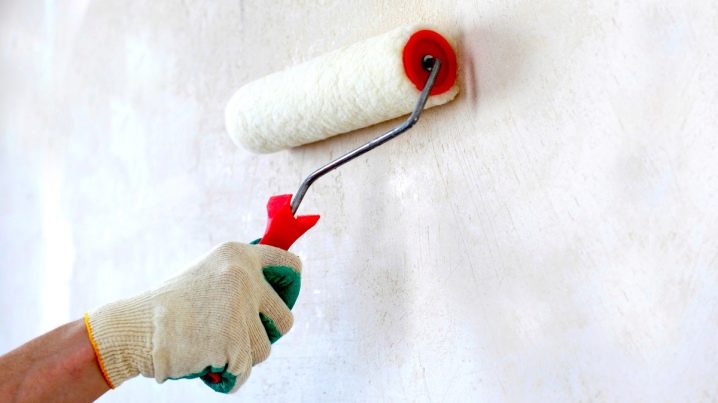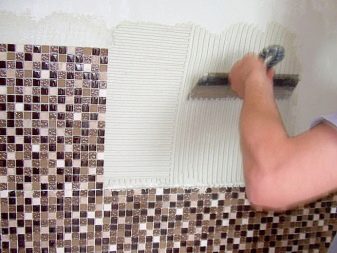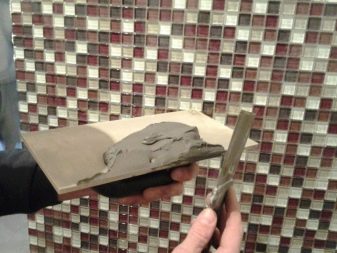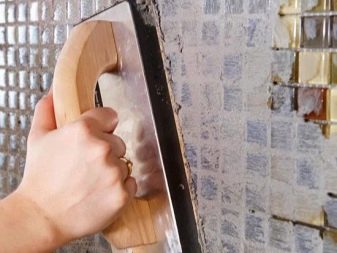Tile-mosaic on the grid: features of choice and work with the material
Mosaic decoration has always been a time-consuming and expensive process, time-consuming and requiring perfect placement of elements. The slightest error could negate all the work and spoil the look of the surface.
Today, an elegant and simple solution to this problem has been invented, which is appreciated by experienced builders and owners of bathrooms and kitchens, in which the decoration is made of this luxurious and refined material.
Features and benefits
Mosaic elements, in fact, are pieces of ceramic, glass, mica or stone tiles. They can be laid out in any order, which gives free rein to creativity and artistic fantasy. Archaeologists find murals and mosaic walls and floors, which are home to ancient Greece, China, Rome, Turkey. The age of finds is several thousand years.This means that today's mosaic pictures created by you will see descendants. This type of finish is very durable.
Laying out individual pieces to create a harmonious composition is a long process. In order to simplify and speed up this work, the elements were fastened on a special net-basis or on paper. The squares are sold already laid out in the correct sequence or randomly, but at equal distance. The mesh is attached to the wall and “sunk” into the tile adhesive. A part of the mosaic surface is made ready in a short period of time. The mesh additionally reinforces the entire layer. The paper base is glued to the front side of the tiles. After mounting the paper must be removed.
The advantages of this type of finish are obvious:
- Ceramics, glass and stone perfectly withstand high humidity, temperature fluctuations and prolonged exposure to water and detergents. Therefore, they are successfully used in the finishing of swimming pools, baths, public buildings, even the subway.
- Tile of any type, including mosaic, is resistant to abrasion and for a long time remains the same appearance.
- Flexible mesh allows you to veneer not only flat surfaces, but also complex rounded shapes: sinks, bathtubs, bowls, arches.
- A huge range of textures and colors involves the creation of any ornaments, panels, paintings and frescoes.
- The low price and ease of installation make the mosaic on the grid popular and affordable for self-installation.
Of the minuses can be noted only two points:
- The need for careful preparation of the surface of the base under the finish.
- Higher cost and complexity of installation compared with the installation of standard large ceramic tiles.
Varieties and materials
The market of finishing materials meets the wishes of the owners and designers to make each interior unique and impressive. Manufacturers offer an innumerable variety of shades, effects and textures. Materials can be advantageously combined with each other (for example, glass and metal, ceramics and stone).
Ceramic tiles are similar to ordinary tiles., for its production is used tiled ceramics. The market offers products with a glossy surface, with an imitation of the texture of wood and stone, with various effects, for example, with sparkles or bright contrasting splashes.This mosaic is very popular due to the universal compatibility with all styles, affordable price, ease of care.
The glass tile has a transparent layer, so the solution can shine through the mosaic. Fix it on a special glue. Such a mosaic may look different. For example, it can be various color stains or a translucent coating with a reflective effect. This tile is more fragile and delicate, scratches and scuffs easily appear on it, and with a strong impact a small square made of glass may even break. Glass mosaic tiles are often used in rooms with high humidity.
Metal mosaic on the grid is made of aluminum or steel. It has a very stylish and original look, and it is necessary to care for it with the help of special detergents that do not damage the coating. Stick it on a special composition. The metal surface is often coated with a layer "under gold" or "under bronze."
Smalt - the oldest material used for the manufacture of mosaic fragments on the basis of glass. It has an opaque structure and a rich palette of shades.From smalt created many of these works of art of world level, preserved in excellent condition to this day. High durability indicators allow the use of smalt elements not only for internal, but also for external works.
Sea stones and pebbles, trimmed by the sea, are excellent material for mosaics. Natural stone fits into any interior, looks luxurious and advantageously highlights any surface. The texture of the stone creates an atmosphere of sophistication and closeness to nature. This material emphasizes the impeccable taste and high status of the host. Stone mosaic is laid on any tile adhesive or even on cement-sand mortar.
The grid for fixing the mosaic fragments is made of polyurethane, it is flexible and perfectly reinforces the layer of tile adhesive, giving extra strength to the entire surface. There is a tile and gauze mesh. This type of material is cheaper, but its quality is significantly lower than that of the polyurethane variety.
A huge assortment of ceramic mosaic products is manufactured in China, Germany, Poland, Russia and other countries.A wide choice is able to satisfy every taste, fantasy and wishes of the client.
Laying technology
Laying such a beautiful and expensive tiles, it is desirable to entrust an experienced professional builder. But if you have the necessary skills and the desire to do this work with your own hands, then you can do it. It is only necessary to study the technological details and stock up on the necessary tool.
When buying, you need to check all the items for a secure attachment to the base. The presence of visual defects or displacement of the squares of the mosaic is unacceptable, the size of the fragments and their distance from each other must be perfectly equal. The choice of glue depends on the type of material. For glass mosaic need a white polyurethane glue. To waterproof the tile layer, a plasticizer or latex is added to it.
When designing the installation of modules, it is necessary to calculate the surface area, web size and consumption of the entire material, taking into account the shape of the structure (if it is not flat). On the wall or on the floor, it is necessary to mark the boundaries of the cladding area, to make a test layout of the mesh sheets.
Before laying preparation of the basis is made:
- It is necessary to carefully level the wall with plaster. If the drops are too large, it is better to screw moisture-proof drywall to the wall.
- Then it is necessary to remove from the base all the dirt and dust, wipe it and dry it.
- For better adhesion, it is necessary to treat the substrate with a deep penetration primer.
Then knead a special adhesive solution strictly according to the manufacturer's instructions. First, water is drawn into the container, then dry ingredients are added. At low revs the mixer produces two mixes at intervals of five minutes.
Apply glue with a notched trowel so that the grooves are formed. Mesh fabric is pressed to the adhesive layer and rolled with a roller. In this case, it is necessary to ensure that the solution does not fall on the front side of the mosaic, and the squares lay flat. Next you need to wait 30 minutes, then remove the protective film from the tile fragments, remove stains and excess glue. After drying, it will be very difficult to make (a mosaic dries out in about two days). If the installation is carried out on the floor, it is impossible to walk on the freshly laid finish until it is completely dry and gaining strength.
Having prepared the trowel mixture, it is necessary to moisten the gaps of the joints by moving the spatula with the grout diagonally.It is necessary to fill all the gaps between the elements of the tile and after 30 minutes wash off the remnants of the grout from the surface. Grout is able to emphasize the beauty of the tile, if it is properly selected for shade and texture.
Mosaic ready. You need to care for it with non-abrasive mild detergents and antifungal solutions.
After washing the glossy surface should be polished to a shine with a dry cloth. With proper care, tiles will delight the owners of the house and impress guests for many years.
The process of laying tile mosaic can be viewed on the video below.
